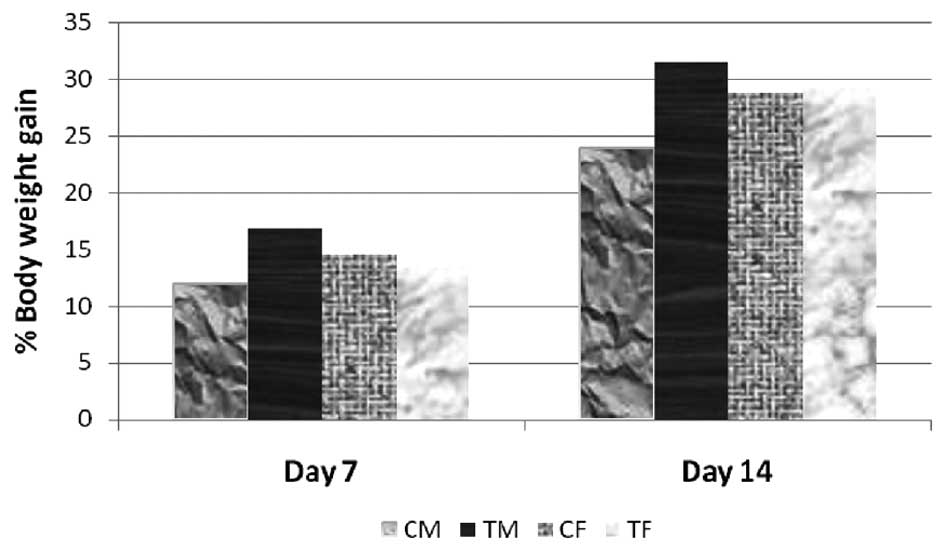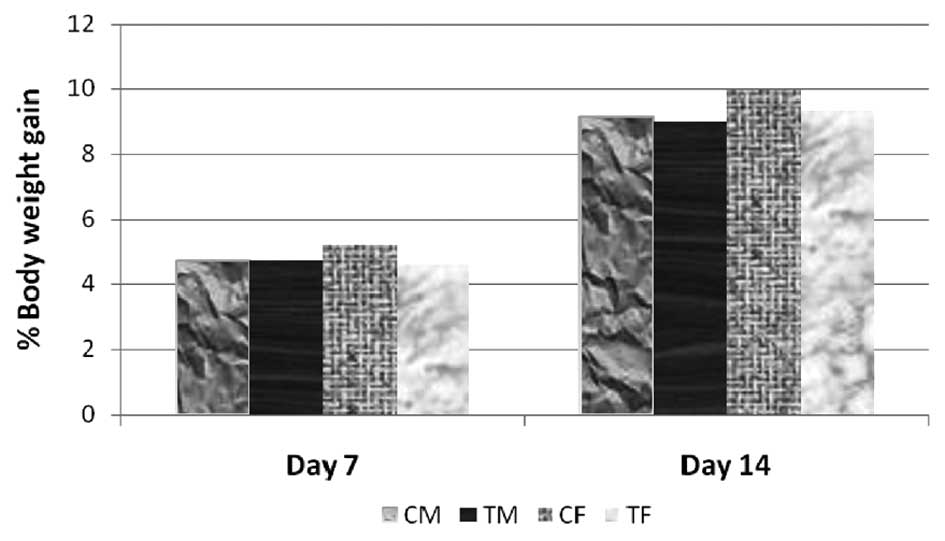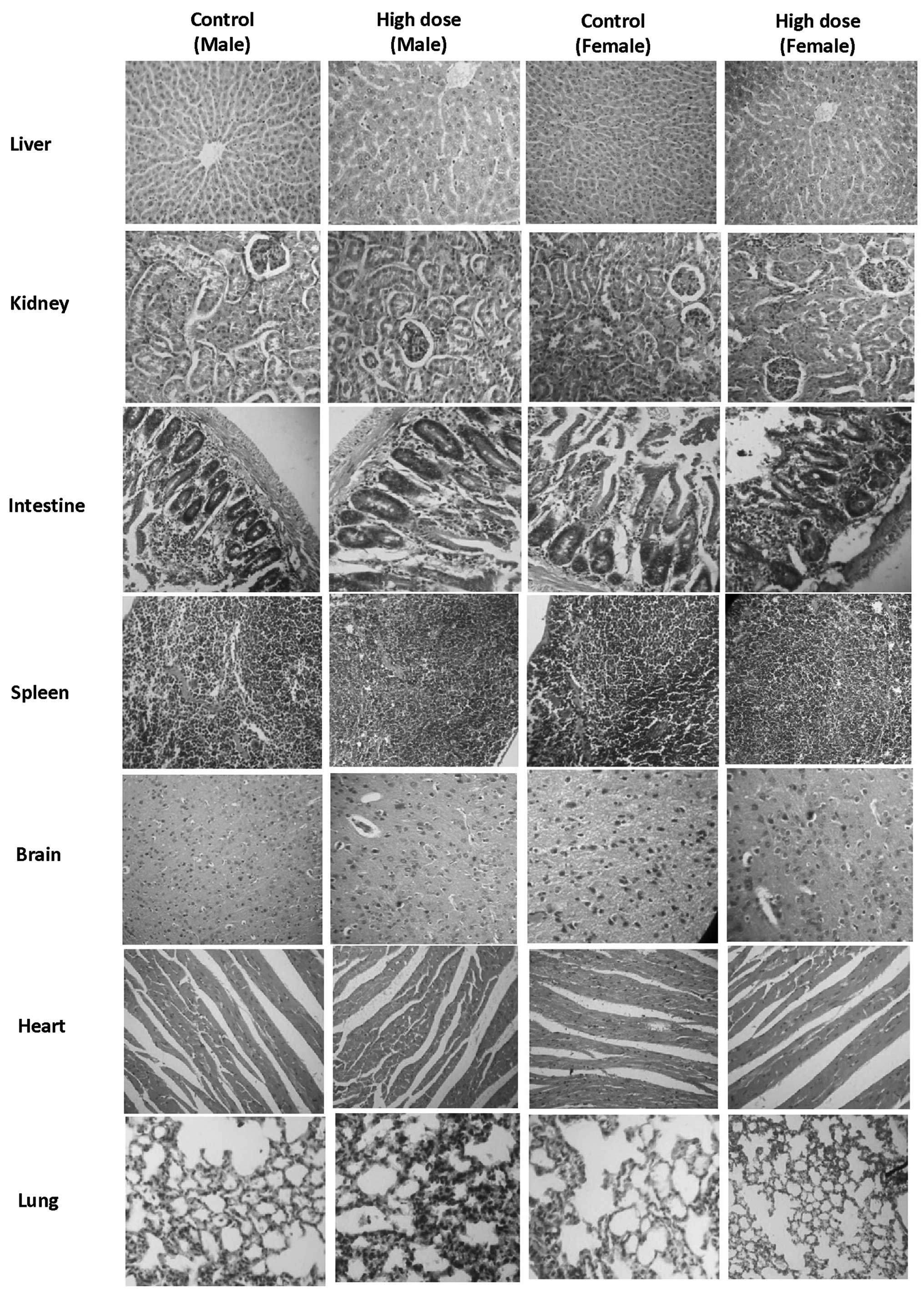|
1
|
Ravindran PN, Nirmal Babu K and Sivaraman
K: Turmeric. The golden spice of life. Turmeric The Genus Curcuma
Boca Raton, FL, USA: CRC Press; 2007, pp. 1–14
|
|
2
|
Maheshwari RK, Singh AK, Gaddipati J and
Srimal RC: Multiple biological effects of curcumin: A short review.
Life Sci. 78:2081–2087. 2006. View Article : Google Scholar : PubMed/NCBI
|
|
3
|
Chandra D and Gupta SS: Anti-inflammatory
and anti-arthritic activity of volatile oil of Curcuma longa
(Haldi). Indian J Med Res. 60:138–142. 1972.PubMed/NCBI
|
|
4
|
Aggarwal BB, Sundaram C, Malani N and
Ichikawa H: Curcumin: The Indian solid gold. Adv Exp Med Biol.
595:1–75. 2007. View Article : Google Scholar : PubMed/NCBI
|
|
5
|
Aggarwal BB and Shishodia S: Molecular
targets of dietary agents for prevention and therapy of cancer.
Biochem Pharmacol. 71:1397–1421. 2006. View Article : Google Scholar : PubMed/NCBI
|
|
6
|
Sharma RA, Gescher AJ and Steward WP:
Curcumin: The story so far. Eur J Cancer. 41:1955–1968. 2005.
View Article : Google Scholar : PubMed/NCBI
|
|
7
|
Duvoix A, Blasius R, Delhalle S,
Schnekenburger M, Morceau F, Henry E, Dicato M and Diederich M:
Chemopreventive and therapeutic effects of curcumin. Cancer Lett.
223:181–190. 2005. View Article : Google Scholar : PubMed/NCBI
|
|
8
|
Joe B, Vijayakumar M and Lokesh BR:
Biological properties of curcumin-cellular and molecular mechanisms
of action. Crit Rev Food Sci Nutr. 44:97–111. 2004. View Article : Google Scholar : PubMed/NCBI
|
|
9
|
Menon LG, Kuttan R and Kuttan G:
Inhibition of lung metastasis in mice induced by B16F10 melanoma
cells by polyphenolic compounds. Cancer Lett. 95:221–225. 1995.
View Article : Google Scholar : PubMed/NCBI
|
|
10
|
Menon LG, Kuttan R and Kuttan G:
Anti-metastatic activity of curcumin and catechin. Cancer Lett.
141:159–165. 1999. View Article : Google Scholar : PubMed/NCBI
|
|
11
|
Chen HW, Yu SL, Chen JJ, Li HN, Lin YC,
Yao PL, Chou HY, Chien CT, Chen WJ, Lee YT and Yang PC:
Anti-invasive gene expression profile of curcumin in lung
adenocarcinoma based on a high throughput microarray analysis. Mol
Pharmacol. 65:99–110. 2004. View Article : Google Scholar : PubMed/NCBI
|
|
12
|
Tønnesen HH, Másson M and Loftsson T:
Studies of curcumin and curcuminoids. XXVII. Cyclodextrin
complexation: Solubility, chemical and photochemical stability. Int
J Pharm. 244:127–135. 2002. View Article : Google Scholar : PubMed/NCBI
|
|
13
|
Pan MH, Huang TM and Lin JK:
Biotransformation of curcumin through reduction and glucuronidation
in mice. Drug Metab Dispos. 27:486–494. 1999.PubMed/NCBI
|
|
14
|
Johnson JJ and Mukhtar H: Curcumin for
chemoprevention of colon cancer. Cancer Lett. 255:170–181. 2007.
View Article : Google Scholar : PubMed/NCBI
|
|
15
|
Sharma RA, Euden SA, Platton SL, Cooke DN,
Shafayat A, Hewitt HR, Marczylo TH, Morgan B, Hemingway D, Plummer
SM, et al: Phase I clinical trial of oral curcumin: Biomarkers of
systemic activity and compliance. Clin Cancer Res. 10:6847–6854.
2004. View Article : Google Scholar : PubMed/NCBI
|
|
16
|
Anand P, Kunnumakkara AB, Newman RA and
Aggarwal BB: Bioavailability of curcumin: Problems and promises.
Mol Pharm. 4:807–818. 2007. View Article : Google Scholar : PubMed/NCBI
|
|
17
|
Cui J, Yu B, Zhao Y, Zhu W, Li H, Lou H
and Zhai G: Enhancement of oral absorption of curcumin by
self-micro-emulsifying drug delivery systems. Int J Pharm.
371:148–155. 2009. View Article : Google Scholar : PubMed/NCBI
|
|
18
|
Marczylo TH, Verschoyle RD, Cooke DN,
Morazzoni P, Steward WP and Gescher AJ: Comparison of systemic
availability of curcumin with that of curcumin formulated with
phosphatidylcholine. Cancer Chemother Pharmacol. 60:171–177. 2007.
View Article : Google Scholar
|
|
19
|
Ganiger S, Malleshappa HN, Krishnappa H,
Rajashekhar G, Ramakrishna Rao V and Sullivan F: A two generation
reproductive toxicity study with curcumin, turmeric yellow, in
Wistar rats. Food Chem Toxicol. 45:64–69. 2007. View Article : Google Scholar
|
|
20
|
Shankar TN, Shantha NV, Ramesh HP, Murthy
IA and Murthy VS: Toxicity studies on turmeric (Curcuma longa):
Acute toxicity studies in rats, guineapigs and monkeys. Indian J
Exp Biol. 18:73–75. 1980.PubMed/NCBI
|
|
21
|
Ravindranath V and Chandrasekhara N:
Absorption and tissue distribution of curcumin in rats. Toxicology.
16:259–265. 1980. View Article : Google Scholar : PubMed/NCBI
|
|
22
|
Wahlström B and Blennow G: A study on the
fate of curcumin in the rat. Acta Pharmacol Toxicol (Copenh).
43:86–92. 1978. View Article : Google Scholar
|
|
23
|
Burgos-Morón E, Calderón-Montaño JM,
Salvador J, Robles A and López-Lázaro M: The dark side of curcumin.
Int J Cancer. 126:1771–1775. 2010.
|
|
24
|
Kizhakkedath R: Clinical evaluation of a
formulation containing Curcuma longa and Boswellia serrata extracts
in the management of knee osteoarthritis. Mol Med Rep. 8:1542–1548.
2013.PubMed/NCBI
|
|
25
|
EFSA Panel on Food Additives and Nutrient
Sources added to Food (ANS): Scientific Opinion on the reevaluation
of curcumin (E 100) as a food additive. EFSA Journal.
8:16792010.
|
|
26
|
Joint FAO/WHO Expert Committee on Food
Additives (JECFA): Summary and conclusions of the sixty-first
meeting. JECF; Rome, Italy: pp. 1–22. 2010
|
|
27
|
Henrotin Y, Priem F and Mobasheri A:
Curcumin: a new paradigm and therapeutic opportunity for the
treatment of osteoarthritis: curcumin for osteoarthritis
management. Springerplus. View Article : Google Scholar
|
|
28
|
Antony B, Merina B, Iyer VS, Judy N,
Lennertz K and Joyal S: A pilot cross-over study to evaluate human
oral bioavailability of BCM-95CG (Biocurcumax), a novel bioenhanced
preparation of Curcumin. Indian J Pharm Sci. 70:445–449. 2008.
View Article : Google Scholar : PubMed/NCBI
|
|
29
|
OECD Guidelines for Testing of Chemicals.
(Acute oral toxicity - fixed dose procedure, test no. 420).
Organisation for Economic Co-operation and Development; Paris,
France: pp. 1–14. 2002
|
|
30
|
Parasuraman S: Toxicological screening. J
Pharmacol Pharmacother. 2:74–79. 2011. View Article : Google Scholar : PubMed/NCBI
|
|
31
|
Maron DM and Ames BN: Revised methods for
the Salmonella mutagenicity test. Mutat Res. 113:173–215. 1983.
View Article : Google Scholar : PubMed/NCBI
|
|
32
|
Schmid W: The micronucleus test. Mutat
Res. 31:9–15. 1975. View Article : Google Scholar : PubMed/NCBI
|












